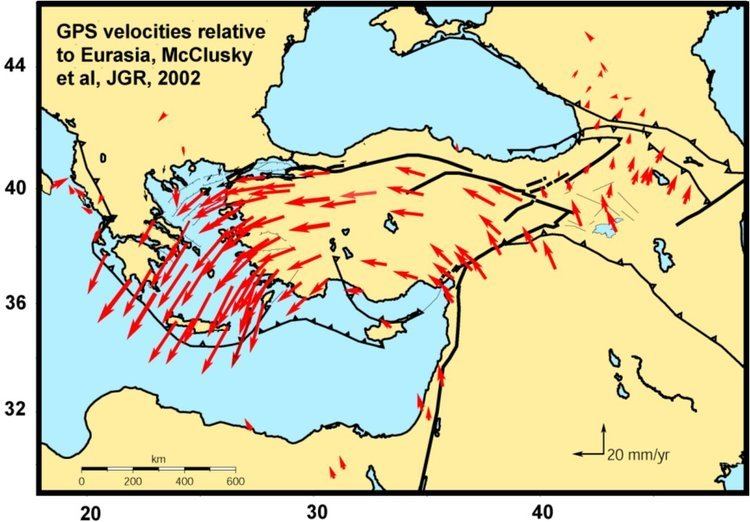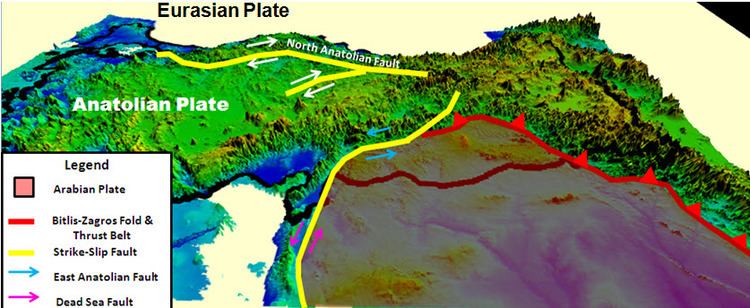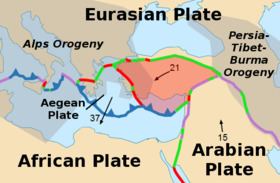Type Minor Speed 21 mm/year | Movement south-west | |
 | ||
The Anatolian Plate or the Turkish Plate is a continental tectonic plate comprising most of the Anatolia (Asia Minor) peninsula (and the country of Turkey).

To the east, the East Anatolian Fault, a left lateral transform fault, forms a boundary with the Arabian Plate. To the south and southwest is a convergent boundary with the African Plate. This convergence manifests in compressive features within the oceanic crust beneath the Mediterranean as well as within the continental crust of Anatolia itself, and also by what are generally considered to be subduction zones along the Hellenic and Cyprus arcs.

The northern edge is a transform boundary with the Eurasian Plate, forming the North Anatolian Fault Zone (NAFZ).
Research indicates that the Anatolian Plate is rotating counterclockwise as it is being pushed west by the Arabian Plate, impeded from any northerly movement by the Eurasian Plate. In some references, the Anatolian Plate is referred to as a "block" of continental crust still coupled to the Eurasian Plate. But studies of the North Anatolian Fault indicate that Anatolia is de-coupled from the Eurasian Plate. It is now being squeezed by the Arabian Plate from the east and forced toward the west as the Eurasian Plate to its north is blocking motion in that direction. The African Plate is subducting beneath the Anatolian Plate along the Cyprus and Hellenic Arcs offshore in the Mediterranean Sea.



